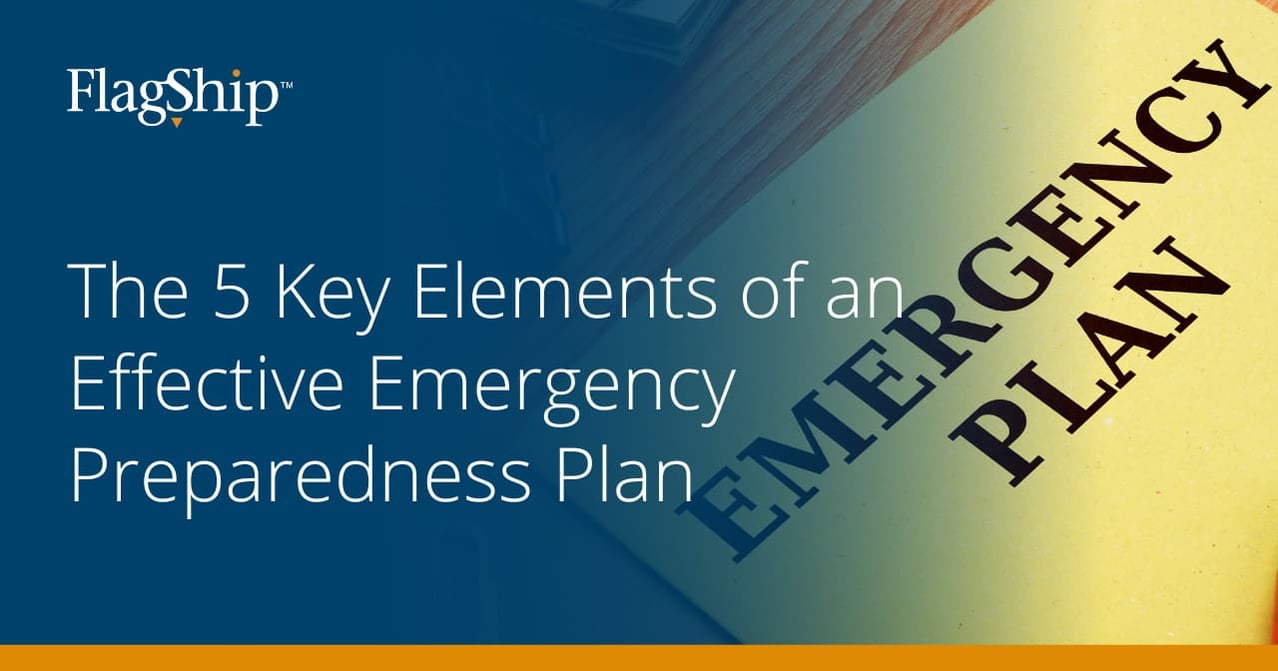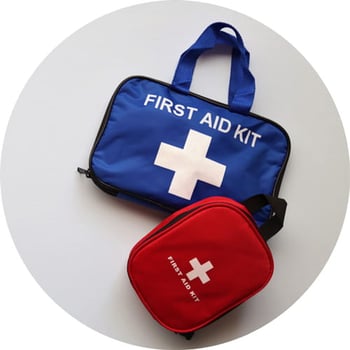
When it comes to facility management, emergencies are not just a possibility; they’re an inevitability. Disasters, whether natural or man-made, can strike at any moment, often with little to no notice. In these scenarios, facility managers can be the difference between chaos and order, damage and preservation, and in extreme cases, life and death.
In this blog post, we provide a guide for creating an emergency preparedness plan to ensure safety, continuity, and resilience in the face of unforeseen challenges. Whether you're new to facility management or a seasoned professional, this post will help you grasp the importance of emergency preparedness and the five key elements of an effective plan.
Understanding the Basics of Emergency Preparedness
 An emergency preparedness plan is a comprehensive document outlining the procedures necessary to respond to various types of emergencies such as natural disasters, health crises, and security threats. This plan's purpose is to identify and assess potential risks, allocate resources (such as personnel, equipment, and finances), and ensure operational continuity.
An emergency preparedness plan is a comprehensive document outlining the procedures necessary to respond to various types of emergencies such as natural disasters, health crises, and security threats. This plan's purpose is to identify and assess potential risks, allocate resources (such as personnel, equipment, and finances), and ensure operational continuity.
Facility managers play a crucial role in both the planning and execution of emergency preparedness plans. They’re often responsible for developing the emergency plan and ensuring it’s up-to-date and reflective of current risks. They also oversee the maintenance and readiness of emergency equipment and supplies, from medical kits to backup power systems.
During an emergency, facility managers typically coordinate with external agencies such as fire departments and medical teams to provide real-time updates to staff and stakeholders. They may also be tasked with organizing training sessions, drills, and post-emergency assessments.
Key Elements of an Emergency Preparedness Plan
Emergency preparedness is an essential aspect of organizational and community safety, requiring meticulous planning and execution. Here we outline the five key elements of an effective emergency preparedness plan:
1. Emergency Response Procedures
Evacuation Plans and Routes
Evacuation plans are critical in ensuring individuals’ safe and orderly exit from a facility during emergencies. These plans should clearly outline the quickest and safest routes out of and away from the building. Evacuation routes must be clearly marked, well-lit, and free from obstructions.
Shelter-in-Place Procedures
Shelter-in-place procedures are designed for situations where evacuation isn’t safe or practical. These guidelines detail how to secure oneself within a building during events like severe weather or a security breach. The procedure should identify safe areas within the facility, methods for sealing rooms, and guidelines for maintaining communication and access to emergency supplies.
2. Communication Plans
Internal Communication Strategies
 Effective internal communication is vital during emergencies. It involves disseminating information quickly and clearly to all individuals in the organization, whether using automated alert systems, public address announcements, phones, or radios. Instructions should be clear, concise, and easily understandable, catering to diverse linguistic and cultural backgrounds.
Effective internal communication is vital during emergencies. It involves disseminating information quickly and clearly to all individuals in the organization, whether using automated alert systems, public address announcements, phones, or radios. Instructions should be clear, concise, and easily understandable, catering to diverse linguistic and cultural backgrounds.
Communication with External Agencies
Communication with external agencies such as emergency services, government agencies, and the media is also crucial. It’s important to establish protocols for contacting emergency services and coordinating with them during an incident. Communication with the media should be managed to ensure the accurate and timely dissemination of information to the public to avoid the spread of panic of misinformation.
3. Resource Management
Inventory of Emergency Supplies and Equipment
Emergency inventory should include medical kits, fire extinguishers, emergency lighting, communication devices, and other critical supplies. Regular checks and replenishments are necessary to ensure that these resources are always operational and available when needed.
Allocation and Management of Resources
During an emergency, efficient resource management and allocation are vital. This involves prioritizing the use of resources based on the severity and requirements of the situation, managing the distribution of supplies, and ensuring the optimal use of equipment.
4. Safety and Security Measures
Security Protocols to Protect Occupants and Property
Security protocols are essential to protect both occupants and property. This includes access control, surveillance systems, and emergency lockdown procedures. Regular reviews and updates of these protocols are necessary to address new threats and vulnerabilities.
Safety Procedures for Different Types of Emergencies
Different emergencies require specific safety procedures. For example, the approach to a chemical spill is different from that of a fire. Safety procedures should be customized for various scenarios and include specific instructions on actions to take, areas to avoid, and methods for seeking help.
5. Training and Drills
Regular Training for Staff and Occupants
Regular training for staff and occupants ensures that everyone knows their role and actions to take during an emergency. Training can include first aid, use of fire extinguishers, evacuation procedures, and communication protocols.
Conducting Drills to Test and Improve the Emergency Plan
Drills are practical tests of the emergency plan. They help in identifying weaknesses and areas for improvement in the plan and in the preparedness of staff and occupants. Conducting regular drills for different scenarios ensures that the emergency response is effective and well-coordinated.
Customizing an Emergency Preparedness Plan for Your Facility
 Customizing your emergency preparedness plan is crucial, as it ensures that the plan addresses your environment's unique risks, layout, and operational needs. This process begins with a thorough risk assessment – a key step in emergency planning.
Customizing your emergency preparedness plan is crucial, as it ensures that the plan addresses your environment's unique risks, layout, and operational needs. This process begins with a thorough risk assessment – a key step in emergency planning.
Facility managers should consider a range of scenarios, from natural disasters like earthquakes or floods, which depend on geographic location, to facility-specific risks such as fires or security threats. Here’s an outline of what to include in an emergency preparedness plan, based on facility type:
Airports
- Aircraft accidents
- Terrorist threats
- Natural disasters
- Hazardous material spills
Laboratories
- Chemical spills and exposures
- Biological contamination
- Equipment and utility failures
Office Buildings
- Fire emergencies
- Active shooter scenarios
- Natural disasters
- Cybersecurity incidents
As we’ve illustrated, emergency preparedness is a vital aspect of organizational management, and facility managers are at the forefront of ensuring that an organization is well-prepared to handle emergencies efficiently and effectively.
Flagship has extensive experience working alongside facility managers to develop and implement emergency preparedness plans across a range of industries.
Our experts can conduct an assessment of your facility to evaluate its emergency readiness and tailor a plan to meet your needs.
For more information about emergency preparedness, visit our resources page.





Leave a Comment